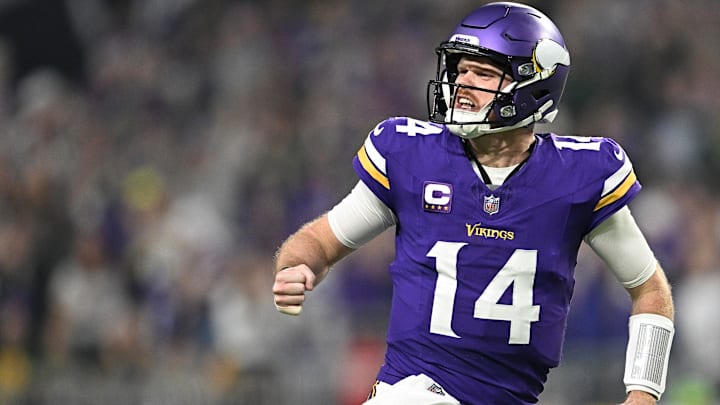Teams have already started preparations for the road to Super Bowl LX in Santa Clara. Coaches are evaluating their rosters for schematic misfits or weak points, and scouts are collecting the final details on prospects across the country. Before the regular season begins, general managers will have to find a way to turn the team’s collective vision into a winning roster within the confines of the salary cap.
A long offseason lies ahead, but it will be far from quiet. In the early stages, the media spotlight is shining brightly on the Minnesota Vikings, who are once again facing questions at the quarterback position. Veteran quarterback Sam Darnold performed admirably before falling flat during the two most important games of the season. Quarterback J.J. McCarthy, the No. 10 overall pick in the 2024 NFL Draft, is clearly the future of the team, but his ability to succeed at the professional level is still a question mark.
With Darnold inching closer to free agency, general manager Kwesi Adofo-Mensah may have to determine the team’s direction rather quickly. The NFL’s two-week window to apply franchise and transition tags began on Tuesday, providing the Vikings with one last opportunity to retain Darnold’s rights.
What is the non-exclusive franchise tag?
In the salary cap and free agency era, teams see a considerable amount of roster turnover on an annual basis. As players on expiring contracts prepare to enter free agency, teams are afforded the luxury of retaining the rights to one pending free agent with a franchise or transition tag. There are three main types of tags: the exclusive franchise tag, the non-exclusive franchise tag or the transition tag.
The non-exclusive franchise tag allows a player to negotiate a deal with other teams. If the player finds a deal elsewhere, the current team can match the offer or receive two first-round picks as compensation for the player. If the player doesn’t sign elsewhere, they can sign a one-year tender that averages the top five salaries at the player’s position over the past five years, or pays 120 percent of the player’s previous salary, if higher.
The exclusive franchise tag prohibits a player from negotiating with any other team, but the one-year tender usually comes with a higher price. The salary for an exclusive franchise tag is determined by averaging the top five salaries at the player’s position that given season or 120 percent of the player’s previous salary, if higher.
The transition tag is a one-year offer for the average of the top 10 salaries at the player’s position. The player can negotiate with other teams and the original team still has the right to match any offer, but there is no compensation if a player signs elsewhere.
Which tag works best for Sam Darnold?
In Minnesota’s situation, they would likely prefer using the non-exclusive designation due to its cheaper salary. The steep price of two first-round picks would likely be too high for other teams to pay Darnold, so using an exclusive franchise tag would be unnecessary.
The non-exclusive franchise tag salary for a quarterback is $41.3 million, while the transition tag salary is $35.2 million. Those are hefty price tag for Darnold, but using a tag is likely the only way Minnesota can keep him on a short-term deal. The Vikings would prefer to eventually move on to McCarthy, so a long-term deal isn’t feasible. Darnold would likely leave for a more secure and long-term situation elsewhere in free agency.
Tagged players have until July 15 to work out a long-term contract extension. Otherwise, they are required to play on the one-year deal.
